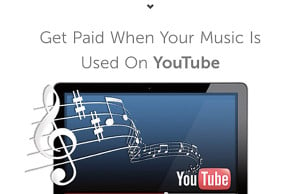An Interview with CEO & Founder Jeff Price
There’s a music site with 30-35 billion “spins” of music a month. It has over a billion users each month, 40% of those listen on mobile, and 80% of them are outside of the U.S. It’s not Spotify, or Pandora, iTunes, or any or the newcomers.
Guessed it yet?
Take the word “spins” and replace it with “views,” and now you might be able to guess the named of the world’s #1 site for streaming and sharing music.
It’s YouTube.
Understand that these aren’t just music videos; they are videos with music in them. Wherever there is video, there is audio, and usually music. So, to understand the future of music, you need to understand video.
Even though only half of those “spins” currently generate revenue, they generated $1.3 billion in music revenue of which, 90% went to major music companies. Until now, only the major music companies made revenue based on music used in other people’s videos.
Enter Audiam, the brainchild of former TuneCore CEO, Jeff Price. Price is a music business disruptor who has been an advocate for independent musicians his entire adult life. Audiam may be his most impressive effort yet. We highly suggest you look at Audiam.com/faq; it’s perhaps the best FAQ we’ve ever seen. Also, Audiam.com/how-it-works for a primer on music rights and YouTube.
 Performer Mag: Give me the elevator pitch on Audiam.
Performer Mag: Give me the elevator pitch on Audiam.
Jeff Price: We get artists paid when their music is used on YouTube. We do the technology behind tracking where their music is being used, collect money from ad revenue, and pay you.
PM: What’s the cost?
JP: Nothing; no upfront costs and no loss of ownership. You get 100% of the money from views on your own videos. In addition, Audiam gets you money when other people use your music on YouTube.
PM: How exactly does Audiam help artists monetize their music on YouTube?
JP: YouTube is a sponge; if you squeeze it right it drips money. They’re a technology company, not a music company. So, to effectively find and monetize videos with music used in them is not something they spend time and money developing. Audiam is a system built on top of YouTube. We use a handful of tools to digitally fingerprint your music and then search and index every video where it’s being used. We then help you authorize YouTube to place shared-revenue advertising around it, collect the revenue, and pay you.
PM: This model is based on ad revenue, how often banners are clicked, or video ads watched; is it more than people assume?
JP: I can provide six billion examples of how often that happens [editor’s note: dollars in YouTube ad revenue]. I am stunned at the amount of revenue coming out of the system.
PM: Can you share some early numbers on how many artists are participating and the revenue generated?
JP: Sure, we launched in July of 2013, and have a few thousand users. When I put this together I really thought we’d hit maybe $20,000 in revenue our first year. We exceeded $500,000 in the first five months! I was blown away. To be clear, even though we now work with big artist catalogs like Dolly Parton, Trent Reznor, James Mraz and others, that revenue was all independents: just like [Performer] readers. That’s important, because it isn’t dependent on stardom.
PM: How do instrumentals work? Does a song have to have lyrics to be used?
JP: Compositions with just music can be used. Also, if you have an instrumental mix of a song that also has vocals, we just need two separate audio recordings and we can work with them both [to track spins].
PM: How do our readers get started?
JP: Go to Audiam.com and create a free account. Upload your recordings (or link to Soundcloud), send a list of your songs and lyrics, and what share you own of those compositions. That’s it. Then we get to work.
PM: How about some examples of how Audiam can leverage revenue for independents?
JP: YouTube is a mashup culture, increasing the probability of your music in any video. There was a video of a timelapse pregnancy in Peru. The creator used the music from a band called Uniform Motion. That video was tagged by Yahoo, and resulted in millions of views and revenue for the band. Think bigger. Perform a live show and tell your fans to record a song and upload it to YouTube. Tell your fans to create and upload covers of your songs. Tell your family to use your music in their videos. This is the biggest opportunity for unsigned artists today to make real revenue. We’re excited to be leading it, and hope your readers will give us a chance to get them paid.
ABOUT THE AUTHOR
-Michael St. James is the founder and creative director of St. James Media, specializing in music licensing, publishing, production and artist development.
For more articles on music licensing, royalties, and social media, head to Performer’s Music Business Page.
